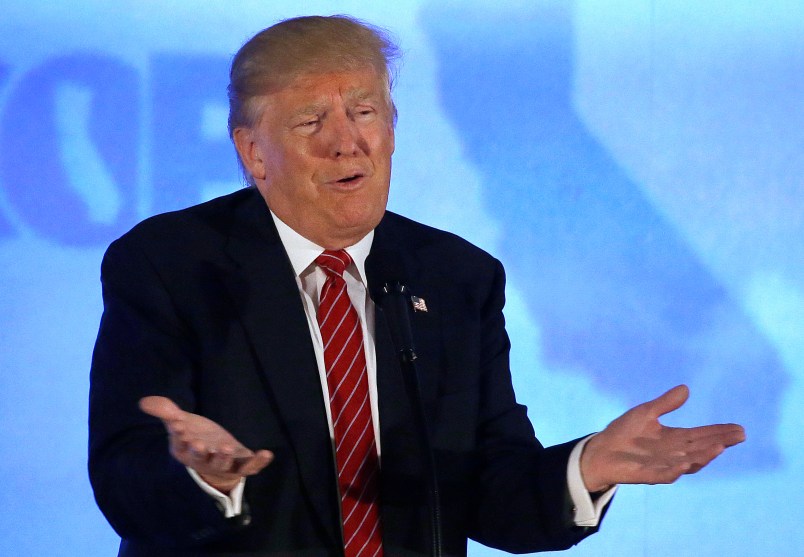Donald Trump is out with a new statement this morning, attacking The New York Times for distorting what he said about reducing the federal debt by deal-making with bond holders to reduce the amount the US government has to pay out to them. In truth, it’s more than just the Times, though Trump seems to have decided they were the best target for his broadside. You can read the statement here.
It’s a little difficult to make sense of just what Trump is saying he would do since what he says is not terribly coherent. But the upshot is not really any different from what Trump said last week, which is aggressive manipulation of the bond market and getting bondholders to accept less than they are owed through various stratagems. That’s just not how sovereign debt works, if you want to gain all the benefits the US does from being the place people go to store their money, at very low rates because Treasury bonds are seen universally as being as close to a riskless investment as you can get. Again, US Treasury bills are what they are precisely because the US doesn’t do stuff like that.
The big picture is that Trump insists on seeing US sovereign debt as just a really big version of the kind of debt a real estate developer takes on when trying to build a big casino or new luxury hotel. But the US is not a big speculative business venture. The security of its debt functions as a basic ligament and connective tissue binding together the stability of much of the global economy – and providing huge benefits to the US economy. It’s genuinely hard for me to believe that Trump really knows that little about international economics or how sovereign debt works. But there you have it.






